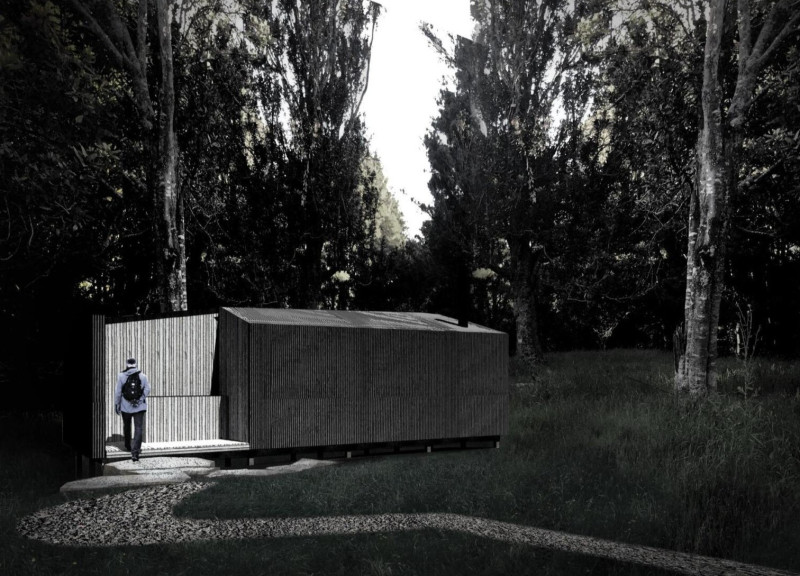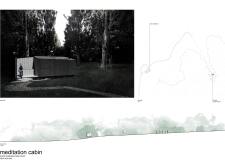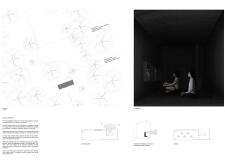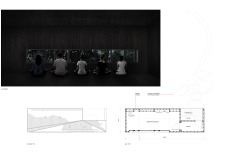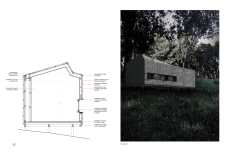5 key facts about this project
The Meditation Cabin at the Earth Energies Sanctuary in New Zealand serves as a dedicated architectural space designed for mindfulness and contemplation. Its construction represents a harmonious integration of the built environment with the natural landscape. The cabin is specifically oriented to foster a tranquil atmosphere that supports both individual and communal meditation practices.
Designed with user experience in mind, the structure's layout strategically guides occupants through various spatial experiences. The mindfulness journey begins at the approach, where the pathway transitions through natural flora before arriving at the cabin entrance. This sequence is intentionally crafted to heighten awareness and facilitate a sense of peace before entering the meditation space.
Design Considerations and Materiality
The architectural design incorporates a range of materials selected for their durability and aesthetic qualities. The exterior features galvanized steel cladding that provides a sleek yet robust exterior. Timber framing contributes warmth and sustainability, channeling local construction practices while enhancing the overall aesthetic. Stained plywood lines the interior, creating a calming environment that complements the meditative function of the cabin.
Large strategically placed windows frame views of the surrounding forest, allowing natural light to filter into the interior. The integration of thermally broken glazing enhances insulation and energy efficiency, ensuring occupant comfort throughout different weather conditions. The exterior's vertical timber slats create a textured façade that interacts dynamically with changing light throughout the day.
Unique Aspects of the Design
What distinguishes the Meditation Cabin from conventional designs is its emphasis on creating a spatial dialogue with nature. The asymmetrical roofline mimics the natural contours of the landscape, further embedding the structure within its environment. Interior spaces are delineated into functional zones, including a large meditation area and a processing altar, allowing for both solitary reflection and communal practices.
The design minimizes visual and acoustic distractions, emphasizing simplicity and serenity. Transition spaces nurture a gradual entry into the meditative state by altering one's sensory perception as they move through thresholds. This design philosophy fosters an intimate experience, reinforcing the connection between user and environment.
Functional and Spatial Organization
The cabin layout facilitates multiple forms of meditation and introspection. The main meditation space is flexible enough to accommodate various group sizes, promoting collaborative practices without losing the focus of individual contemplation. Careful consideration is given to the orientation of these spaces, allowing for optimal light exposure and scenic views, which enhances the overall experience for users.
For those interested in further exploring the architectural plans, sections, and designs, a complete project presentation is available. This includes detailed insights into the architectural ideas and thought processes that guided the development of the Meditation Cabin.


